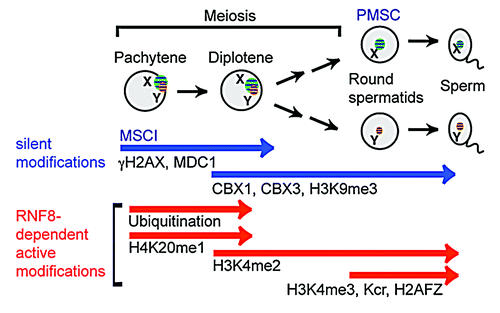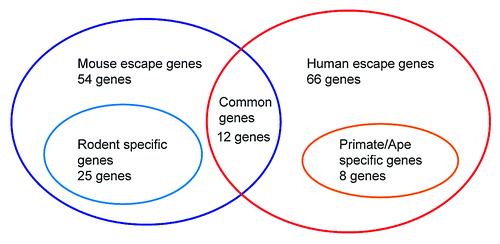Figures & data
Figure 1. Schematic of epigenetic programming on the sex chromosomes in spermatogenesis of mice. In the pachytene stage, unsynapsed X and Y chromosomes are silenced (MSCI) and form a silent compartment XY body (or sex body). The DDR pathway centered on γH2AX and MDC1 initiates MSCI. Chromosome-wide silencing of the sex chromosomes persists into post-meiotic round spermatids. In the round spermatids, the sex chromosomes occupy a silent compartment, PMSC. Silent epigenetic modifications (CBX1, CBX3, H3K9me3) on the sex chromosomes are maintained from meiosis to round spermatids. The RNF8-dependent active modifications are shown by red bars.

Figure 2. Summary of diversity of escape genes on the X chromosome in postmeiotic spermatids. Escape genes in postmeiotic spermatids are significantly diverged between humans and mice. Between the mice and humans (54 escape genes in mice vs 66 escape genes in humans), only 12 escape genes are in common in both groups. Twenty-five out of 54 mice escape genes are newly evolved genes only in rodent lineage, and 8 out of 66 escape genes are newly evolved genes only in primate/ape lineages.
